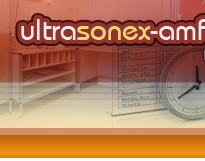

 |
 |
|
Главная страница Напряженность электрического поля (тиристор) векции, обладает хорошей электрической изоляцией и удобна в эксплуатации. При применении жидкого фреона необходимо соблюдать особую осторожность (хотя этот газ является нетоксичным, он вызывает удушье, а при высокой температуре разлагается с образованием побочных продуктов). В контейнере должны создаваться как вакуум, так и повышенное давление. Для фреона характерно пониженное давление при комнатной температуре, при рабочей температуре оно составляет десятые доли мега-паскаля. Большой интерес представляют диэлектрические жидкости, в частности широко применяемые типы фреона R11 и RH3, с достаточно высокой диэлектрической проницаемостью, для того чтобы позволить непосредственно погружать в жидкость тиристорные структуры без опасности пробоя тиристора при блоки-рурш.е;м напряжении. Этим руководствуются при погружном охлаждении тиристоров в R11 и R113 без заключения их в нормальный герметичный корпус. С учетом вышеизложенного незащищенный выпрямительный элемент помещается в охлаждающую жидкость, которая не-посредственнб контактирует с тиристором, обеспечивая эффективный теплоотвод. При этом объем, занимаемый тиристором, и его масса уменьшаются [Soffer, 1981]. Однако на практике трудно получить высокий уровень очистки жидкости. Поэтому тиристоры упаковывают в кожух, который специально конструируется для применения в системах фреона. Следовательно, нет необходимости делать эти корпуса с такой же степенью герметичности, как конвекционные, подгонять по размерам и удалять с них заусенцы. Специальные корпуса имеют низкую стоимость и более совершенное тепловое сопротивление по сравнению с корпусами, предназначенными для конвекционного охлаждения. список ЛИТЕРАТУРЫ К ГЛ. 2 ЗАКРЫТОЕ СОСТОЯНИЕ Adler М- S., Temple V. Л. К. А general method for predicting the avalanche voltage of negatively bevelled devices IEEE Trans. Electron. Devices, 1976. Vol. ED 23. P. 956 960 Bakowski M., Lundstrom K. I. Depletion layer characteristics at the surface of bevelled high voltage on junctions IEEE Trans. Electron. Devices. 1973. Vi)l ED 20. P. 550- 564. Basavanagoud D., Bhat K. N. Effect of lateral curvature IEEE Electron. Device Lett 1985. Vol. EDL-6, № 6. P. 277. Cornu J. Field distribution near the surface of bevelled P-N Junctions in high voltage devices IEEE. Trans. Electron. Devices 1973. Vol. ED - 20.P.547- 352 Cornu J. Double positive bevelling: a better edge contour for higii voltage de\n4s IEEE Trans. Electron. Devices. 1974. Vol. ED-21. P. 181 184. Davies R. L., Gentry F. E. Control of electric field a the surface of P-N junctions IEEE Trans. Electron. Devices. 1964. Vol. EDU. P. 313-323. Ghandi S. К Semiconductor Power Devices, Wiley - Interscience. New York, 1977. Herlet A. The ma.ximum blocking capability of silicon thryistors Solid State Electron. 1965. Vol. 8. P 655 671. Kao Y. C, Wolley E. D. High voltage planar p- n junctions Proc. IEEE. 1967. Vol 55. P. 1409 1413. Moll J. L., Su J. L., Wang A. C. M. 1970. Muiiiplication in collector pindions of silicon npn and pnp transistors IEEE Trans. Electron. Devices. 1970. Vol. ED 17 P. 420 423. Sakurada S., Ikeda Y. Recent trends in the gate turn off thyristor Hitachi Rev. i)8() Vol. 30 P 197 - 200. Sze S. M. PhvsRs of Semiconductor Devices, Wiley, New York. 1981. Temple V. A. K. Practical aspects of the depletion etch method in high voltage devices If-EE: Trans. Electron. Devices. 1983a. Vol ED -27. P. 977 982. Temple V. A. K. Increased avalanche breakdown voltages and controlled Mirlacc electric fields using a junction termination extension f JTE) technique IEEE trans Electron. Dtvices I98,sl). Vol. ID 30. P. 954 957. Temple V. A. K., Adler M. S. The theory and application of a simple etch contour for near ideal breakdown in plane and planar p n junctions IEEE Trans i:ieclron Devices. 1976. Vol. ED 2.4. P. 950 - 955. ВКЛЮЧЕНИЕ Adler M. S. Details of the plasma spreading process in thvristors IEEE irans. r.lcctron Devices. 1980 Vol. ED 27. P. 475 -.502 Adler M. S., Temple V. A. K. The dynamics of the fhyrislor turn on process I:i:K Tran.s. Electron Devices. 1980. Vol. RD-27. P. 483 494. Assalit H., Kim J., Celie B. Static plasma spreading in thyristor devices Proc Indu.sfrv Appl- -Soc. IEEE. 1983. P. 7M 787. Bergman G. D. The gate triggered turn on process in thyristors Solid State l-lectrori Vol. 8. P. 757 -765. Blicher A. Thyristor Physics. Springer Verlag, Berlin. 1978. P. 47 61. Cornu J., Jaeckiin A. A. Processes at turn on thryistors Solid State Electron. 1975. Vol. 18. P. 683-689. Dodson W. H., Longini R. L. Probed determination of turn on spread large area thyristors IEEE. Trans. Electron. Devices. 1966. Vol. ED-13. P. 476-482 Ghandi S. K. Semiconductor Power Devices. Wiley-Interscience, New York. 1977. P. 210-217. Ikeda S., Araki T. The dl/dt capability of thyristors Proc. IEEE. Vol. 55. P. 1301 - 1305. Jaeckiin A. A. The first dynamic phase at turn on of a thyristor IEEE Trans. Electron. Devices. 1976. Vol. ED-23. P. 940-944. Jaeckiin A. A. Two dimensional model of a thyristor turn on channel IEEE Trans. Electron. Devices. 1982. Vol. ED-29. P. 1529-1535. Matsuzama T. Spreading velocity of the on state on high speed thyristors Electrical Engineering in Japan. 1973. Vol. 93. P. 136-140. Ruhl H. J. Spreading velocity of the active area Iwundary in a thyristor IEEE Trans. Electron. Devices. 1970. Vol. ED-17. P. 672-680. Suzuki M., Sawaki N.. Iwata K., Nishinaga T. Current distributions at the lateral spreadingof electron hole plasma in a thyristor IEEE Trans. Electron. Devices. 1982. Vol. ED-29. P. 1222-1225. Sze S. M. Physics of Semiconductor Devices. Wiley-Interscience, New York, 1981. Yamasaki H. Experimental observation of the lateral plasma propagation in a thyristor IEEE Trans. Electron. Devices. 1975. Vol. ED-22. P. 65-68. ОТКРЫТОЕ СОСТОЯНИЕ Adler M. S. Accurate calculations of the forward drop and power dissipation in thyristors IEEE Trans. Electron. Devices. 1978. Vol. ED-25. P. 16-22. Chang M. F., Wolley E. E., Bevacqua S. F. Thyristors and diodes as p-i-n structures at high currents Proc. Industry Appl. Soc. 1979. P. 1068-1070. Choo S. C. Effect of carrier lifetime on the forward characteristics of high power devices IEEE Trans. Electron. Devices. 1970. Vol. ED-17. P. 647-652. Cornu J., Lietz M. Numerical investigation of the thyristor forward characteristic IEEE Trans. Electron. Devices. Vol. ED-19. P. 975-981. Davies R. L., Petruzella J. P-N-P-N charge dynamics Proc. IEEE. 1967. Vol. 55. P. 1318-1330. Ghandi S. K. Semiconductor Power Devicesi Wiley-Interscience, New York, 1977. Hall R. N. Power rectifiers and transistors Proc. IRE. Vol. 40. P. 1512- 1518. Herlet A. The forward characteristic of silicon power rectifiers at high current densities Solid-State Electron. 1968. Vol. II. P. 717-742. Kokosa R. A. The potential and carrier distributions of a PNPN device in the on-state Proc. IEEE. 1967. Vol. 55. P. 1389-1400. Kurata M. One dimensional calculation of thyristor forward voltages and holding currents Solid State Electron. 1976. Vol. 19. P. 527-535. Nilsson N. G. The influence of Auger recombination on the forward characteristics of semiconductor power rectifiers at high current densities Solid State Electron. 1973. Vol. 16. P. 681-688. Otsuka M. The forward characteristic of a thyristor Proc. IEEE. 1967. Vol. 55. P. 1400-1408. Sze S. M. Physics of Semiconductor Devices, Wiley-Interscience, New York, 1981. ВЫКЛЮЧЕНИЕ Assalit H. B. Thyristor turn off time trade offs Proc. Industry Appl. Soc. 1981. P. 707-713.
|
|
© 2000 - 2025 ULTRASONEX-AMFODENT.RU.
Копирование материалов разрешено исключительно при условии цититирования. |